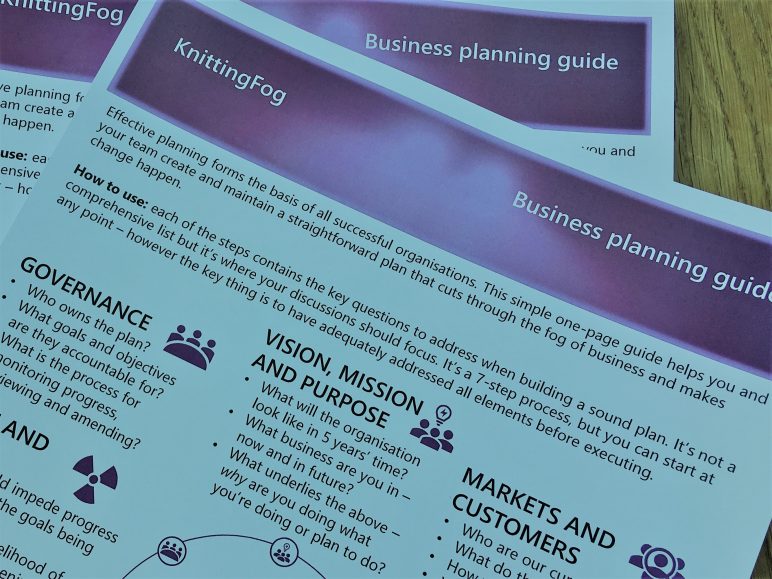Purpose is key, but you need vision to inform it
Many years ago, I was on one of the least fulfilling consulting projects I have ever carried out. It had all the hallmarks of success – prestige international client, great colleagues, working in London and New York – but the only problem was that the director who’d hired us didn’t seem to know what problem we were there to solve. It wasn’t all bad, as the client team were an interesting bunch: highly motivated, very hard-working… and as cynical as they come. One remark has stuck with me through the decades: referring to a member of the client organisation who was seen as making a potentially useful contribution to the project one of the team referred to him as “a bit of a visionary”. However, the way she said this – the particular tone of her voice – suggested that his contribution would be far from useful.
So, what’s the problem with visions and visionaries – and are they any use when we are increasingly concerned with an organisation’s purpose?
When I talk about vision, mission and purpose in strategy courses and workshops, I do a quick quiz as an icebreaker, using a slide with the following three people on it:

I ask people to name them and tell me which one is the odd one out. People usually guess the two chaps on the left and right – Steve Jobs and Elon Musk – but have a bit more difficulty with the central character, possibly as she wasn’t responsible for a prestige tech brand. It’s Hildegard of Bingen, the 12th Century German Benedictine abbess, writer, composer, philosopher, Christian mystic, visionary, and polymath. She’s the odd one out, not just because she is female, but because she was the only one amongst the three to have actual visions.
Now I’m not saying that this makes Hildegard more or less of a visionary than the other two – even if some people have attributed her visions to temporal lobe epilepsy or migraine – but I bring her in to the conversation to make the point that there is a bit of a problem with visions and visionaries. The fact that I have cited three high achievers who have made significant advances in their chosen fields means that “being a visionary” – my former client colleague notwithstanding – or having a vision is seen as something “out there” and exceptional; something not for normal people.
I contend that this is nonsense.
Why?
Having and articulating a vision is something we should all do, whether it’s for our companies, our neighbourhoods, our families or ourselves. And developing it is fairly straightforward: you simply complete the following sentence:
“A world where…”
“World” in this context doesn’t necessarily mean the whole world, it could be the world of your company, division, family or just you.
To give you a concrete example close to me, I work with a music education charity, World Heart Beat, whose vision includes
“a world where music, as a universal form of communication, bridges cultural, political, economic and linguistic barriers”.
What I like about this vision is that, whilst it could be some distant future world, it’s quite possible to realise it on a local scale, i.e. in the parts of London that the charity operates in – and indeed it translates this vision into the way its courses, concerts and other events are put together.
So, a vision can be both far away and present at the same time: in fact, if it’s a dream – as Martin Luther King so powerfully articulated – or a state that may seem distant when compared to the present, it’s actually more useful than one which too strongly implies a destination.
A lot of vision statements I have seen make the mistake of extending what the person or the company currently does into a more ambitious version of themselves. So a vision statement like:
“providing high quality solutions for the supply chain market”
isn’t a vision statement. Instead, envisioning
“a world where supply chains are friction-free, enabling clients to optimise their manufacturing and distribution schedules to deliver more cost-effective solutions to their customers”
would, I think, be a bit more ambitious and, moreover, emphasise the benefit of such a world.
Not just for trekkies
Vision statements that include a destination are basically mission statements, perhaps most famously (if you spent too much time in your youth watching science fiction on TV) in the mission of the Starship Enterprise. A mission has some sort of objective and, like a vision, needs to be powerful to motivate the team(s) involved in delivering it. The vision may be delivered by implementing the mission but actually the most powerful visions are those that don’t define a specific destination.
What’s the purpose of purpose?
The emphasis on purpose to provide a focus for the organisation might be seen as removing the need for mission and vision statements. I’d argue that the opposite is true: a definition of the organisation’s purpose – the why as Simon Sinek refers to it – is best arrived at when you have a vision to accompany it (and a mission to deliver it).
To craft a purpose statement is simple but requires deep thought and discussion to get there. A sentence with the structure:
To [contribution] so that [outcome]
is all you need but agreeing the contribution (the timeless value-adding work you do) and the outcome (the benefit for your customers) is a non-trivial conversation.
In my strategy and planning workshops I spend time on all three, spending most time on the one that’s insufficiently well-defined, as it teases out the motivators and the direction to create alignment before we get into the things that need to change and their relative priority. Vision is often the most powerful element of that conversation, as people share their real feelings about the business, what it contributes (beyond a healthy balance sheet) and how they see themselves in it.
The vision thing is still necessary and, in what appears to be an increasingly fractious world, I’d argue that we need powerful, ambitious visions more than ever.
You can find out how vision fits in to the KnittingFog approach to strategy and business plan development by downloading my one-page guide.












